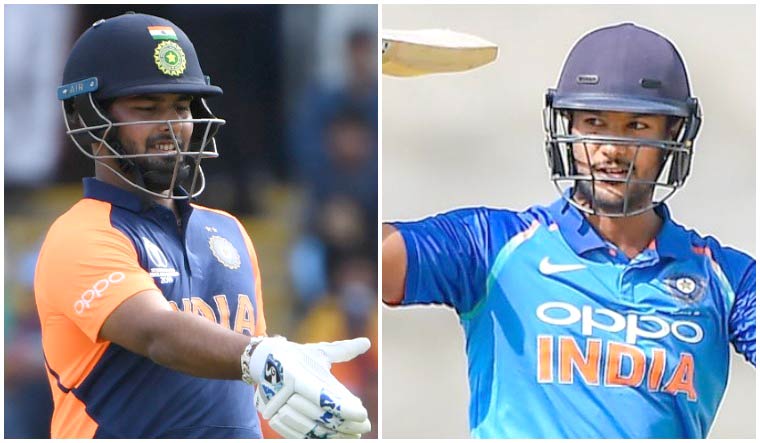
A day before India’s first match against South Africa in the ongoing ICC World Cup, skipper Virat Kohli was clear about his playing XI—especially about the number 4 position. The same XI came up with the goods and India’s unbeaten run remained unquestioned. And then the match against Afghanistan happened. Since then, the Indian team management suddenly has had a lot on its plate than what it had bargained for.
In two weeks, Team India has seen three injuries and two replacements. For a team that came as title favourites with “all bases covered”, the latest call-up of Test opener Mayank Agarwal, who is yet to play an ODI, to replace injured all-rounder Vijay Shankar shows a hint of desperation. It has sent some mixed signals—is Agarwal a cover for opener K.L. Rahul? Are India worried, or confident about their bench strength? Are they panicking amid a barrage of criticism over India’s middle-order failing to fire. The MSK Prasad-led selection committee has a lot to answer for.
Already the loss to England—India’s first in this World Cup—has made the Indian team management consider tweaking the playing XI. It has more to do with adding depth to its floundering batting later on, than with conditions. Team India assistant coach Sanjay Bangar made it obvious after the loss to England. “Yeah, this game throws up (the issue of bringing in Bhuvneshwar Kumar to bolster batting in the lower order). The team management will be open to various combinations. We are open to all combinations—three seamers plus Hardik Pandya or Ravindra Jadeja coming in.
“When you don’t have major contributions from the lower order, having somebody handy at eight, like Bhuvi or Jadeja, gives us the freedom to have a batsman at 6. There will be a point where we will have to reassess our combination.”
Agarwal was not even in the national selectors’ so-called list of stand-bys. So far, they have brought into the World Cup side two players who were not in the original squad of 15, indicating their lack of long-term vision. Pant’s exclusion was criticised and so they thought they had rectified it by bringing him despite his lack of experience playing for Men in Blue in the run-up to the World Cup.
Agarwal was not even in the frame, though he had done enough to be considered seriously as one of the possible 15. The team persisted with Ambati Rayudu for long enough only to dump him later for Vijay Shankar, which gives him serious reasons to feel aggrieved, now even more so. India also have within their ranks wicketkeeper batsman Dinesh Karthik, who is a cover for M.S. Dhoni, but has not been used yet in the playing XI.
The injury to opener Shikhar Dhawan was the biggest setback for the Indian think-tank—so much depended on him, Rohit Sharma and Virat Kohli. It's true that one can never predict or plan for multiple injuries in a tournament like the World Cup. But one can plan for the long term with back-ups. Both Pant and Agarwal had minimal ODI exposure before the World Cup. The selectors and the team management, perhaps, thought that the IPL was good enough to gauge form.
Compare this with the planning which went into the 2011 tournament. A young Virat Kohli was given two series before making it to the final squad. He was 21 then. He scored a century in his first World Cup match and knew exactly what his role was. But then, this selection committee has sadly, not looked too far in history to learn its lessons from.
What has exacerbated the problem in Indian camp is the apparent struggles of middle-order batsmen Kedar Jadhav and Dhoni. The duo's laboured finishes against Afghanistan was considered one-off; but the match against England complicated the matter. Forget the criticism from outside, the Indian team think-tank seems to be already thinking of bolstering the lower order, as Bangar’s words suggested.
The apparent “lack of intent” against England also increases manifold the pressure on India's in-form batsmen Rohit Sharma and Kohli. The need to bat long becomes the overriding necessity, knowing the lower middle-order is struggling to score.
Heading into the most crucial phase of its World Cup campaign, that's the kind of pressure Team India need to avoid.



No comments:
Post a Comment